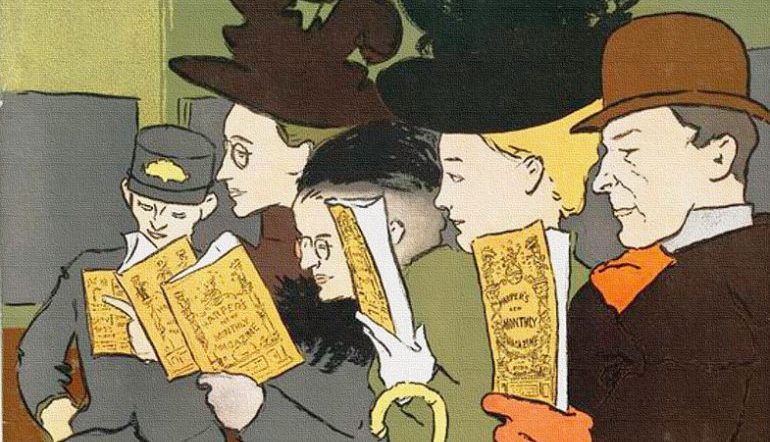Objects of Affection

Guest post by Megan Mayhew Bergman
It was 2000, late September. I was twenty years old, studying abroad in Italy, and on my way to Munich on a train. Just before boarding, I picked up a copy of Anne Michaels’ Fugitive Pieces. I didn’t have a lot of extra spending money, so buying the new book was a luxury.
The train was packed; it was the first weekend of Oktoberfest. My friends and I had booked sleeping berths. People were stuffed everywhere–the train had been oversold. It was dark, loud, and a little dirty. I was outside my comfort zone.
Passengers were already beginning to party on the train, swigging from bottles, moving from car to car, celebrating in varied languages. I settled into my berth–an act of territoriality and nerdiness–and began reading my new book.
Soon I realized I could no longer read without a pen in hand. I was so taken with Michaels’ sentences that I had to stop and worship them. Her character Athos says to a young boy he’s just rescued, “Sometimes I can’t look you in the eye; you’re like a building that’s burned out inside, with the outer walls still standing.” “Never,” Michaels writes, “trust biographies. Too many events in a man’s life are invisible.”
This passage also stirred my twenty-year-old soul:
Always hungry ourselves, we commiserated with the starving explorers. In their howling tent, the exhausted men ate hallucinatory meals. They smelled roast beef in the frozen darkness and savored each bite in their imaginations as they swallowed their dried rations. At night, rigid in their sleeping bags, they discussed chocolate.
Fugitive Pieces was a first love of sorts, the first time I remember engaging seriously with a text on my own outside the strong hand of academia, or loving the sound of prose as much as its content. I was a different reader, then, with different tastes. But never before had I been so intimate with a book, read its passages over and over, dog eared pages with abandon just to return to a beautiful sentence.
Years ago, I loaned that first annotated copy of Fugitive Pieces to a colleague and never got it back. I figure it exists somewhere on a friend-of-a-friend-of-a-friend’s bookshelf, or in a warehouse of used books. I wish I could go back and see the sentences I underlined, the pages I marked. It was a very dear and formative possession.
I’ve always been drawn to old and used books, particularly those which have been well loved, like my long gone copy of Michaels’ Fugitive Pieces. While I think it’s important to buy new books (to support the authors that write them), I also buy used books from old shops, flea markets, and online vendors. My favorite type of used book is one where I can see the way the reader engaged with the text, or with what affection the author bestowed the book. When online vendors note “some writing in the margins” I want the book even more; I love communing with the previous owner, seeing the pencil marks from pre-computer days, the endearing inscriptions like To Charles, With Love.
My first edition copy of Edna St. Vincent Millay‘s Wine from These Grapes–a gift from a friend–has an illegible name scrawled in pencil that looks like Gerber. Gerber didn’t read this beautiful book much, or he or she used kid gloves to open it. A shame, really.
I have a cheap 1968 paperback copy of Salinger’s Raise High the Roof Beam, Carpenters and Seymour, an Introduction. The first half of the book is loose and thumbed through; the old pages of the Seymour section are tight and the spine is rigid, as if no one spent much time in that part of the book. (I can’t blame them; to read Seymour is to slog.)
In an old copy of Marquis James‘ 1938 Pulitzer Prize-winning The Life of Andrew Jackson, given (loaned?) to me by my husband’s uncle, almost every one of the 784 pages has information underlined. The rigor with which that particular reader engaged with this dense text impresses and inspires me.
I own a former library copy of Thomas Douglass’s A Room Forever: The Life, Work, and Letters of Breece D’J Pancake. The inside is stamped with brutal red ink: DISCARDED. The book seems largely unread. My acquisition was a rescue job.
Recently, I checked out two books by Djuna Barnes—Ladies Almanack and The Selected Works of Djuna Barnes–from the library at a small, private college. They were gifts to the school, though judging by the card in the back, I am the first to check either out (such is the fate of Djuna in most libraries, I presume.) What gifts they were, though. The Selected Works is heavily annotated; it’s invigorating to see someone wrestle with a text as rich as Djuna’s. Allusions have been researched and ties to Greek tragedy acknowledged. Exclamatory notes abound: Shakespeare! Ambivalence!
Furthermore, the biography at the back of Djuna’s Ladies Almanack contains a note: Did she authorize this? It’s a worthy, thought-provoking question that caught my attention–Djuna originally published the collection anonymously (in 1928), and even when she allowed her name to be included on a later printing (1972), it’s hard to imagine her providing such an insipid note. So far, I’ve found the previous reader of these works to be astute, and her graffiti, helpful.
Now, as a writer and teacher, no longer a wayward student on a train to Germany, I’m more apt to read with a pen in hand, get scribbly with the books I love, and flag remarkable sentences and enviable ideas. There’s even a copy of Malcolm Cowley‘s Portable Faulkner that I’ve borrowed from the public library at least three times; for good or bad, my green ink scars the margins. I prefer this type of physical engagement with texts to the copy-and-paste, flick-of-a-stylus electronic mode of reading. The books in my life–the ones that really matter–are a little weak in the spine, underlined, and have pages folded like bad origami.
This is Megan’s fifth post for Get Behind the Plough.
Images courtesy of the writer.



